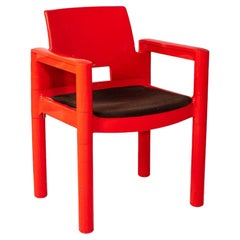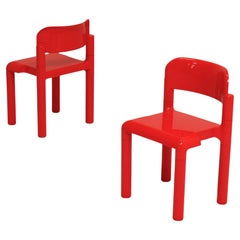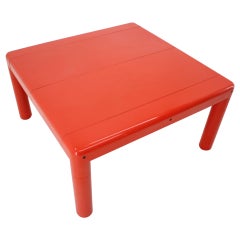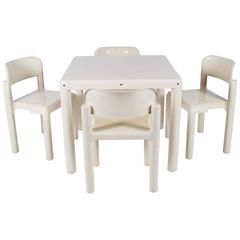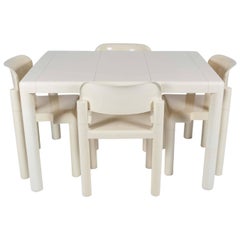Eero Aarnio Upo
Vintage 1970s Finnish Space Age Armchairs
Upholstery, Plastic
Late 20th Century Finnish Scandinavian Modern Office Chairs and Desk Chairs
Plastic
Vintage 1970s Finnish Mid-Century Modern Coffee and Cocktail Tables
Metal
Recent Sales
Vintage 1970s Finnish Mid-Century Modern Dining Room Sets
Plastic
Vintage 1970s Finnish Mid-Century Modern Dining Room Sets
Plastic
Vintage 1970s Finnish Mid-Century Modern Dining Room Sets
Metal
Vintage 1970s Finnish Mid-Century Modern Dining Room Sets
Plastic
Vintage 1970s Finnish Scandinavian Modern Dining Room Chairs
Plastic
People Also Browsed
2010s German Mid-Century Modern Chandeliers and Pendants
Brass
Vintage 1960s Italian Mid-Century Modern Carts and Bar Carts
Iron
Vintage 1960s French Mid-Century Modern Sideboards
Oak, Ceramic
Vintage 1960s French Mid-Century Modern Wardrobes and Armoires
Brass
Vintage 1960s American Mid-Century Modern Coffee and Cocktail Tables
Metal
Vintage 1970s Swedish Mid-Century Modern Lounge Chairs
Chrome
2010s Italian Lounge Chairs
Textile
Vintage 1970s American Mid-Century Modern Wardrobes and Armoires
Walnut
Antique Mid-18th Century Indian Anglo-Indian Paintings and Screens
Paint
Vintage 1960s French Space Age Cabinets
Metal
21st Century and Contemporary American Mid-Century Modern Credenzas
Walnut
Mid-20th Century Japanese Coffee and Cocktail Tables
Cypress
Vintage 1960s Italian Coffee and Cocktail Tables
Chrome
Vintage 1950s American Mid-Century Modern Bookcases
Aluminum
Vintage 1980s Italian Mid-Century Modern Sideboards
Wood
Vintage 1960s Italian Coffee and Cocktail Tables
Wood
Eero Aarnio for sale on 1stDibs
“I always look ahead, never back,” Finnish design legend Eero Aarnio has been quoted as saying. A leading innovator of modern furniture design, Aarnio has long embraced a bold, playful, confident and colorful style several steps ahead of his time.
For his 1954 entrance test for the Institute of Industrial Arts in Helsinki, Aarnio created a whimsical painting of a man reading a newspaper in a red, curved chair whose silhouette foreshadowed Aarnio’s Ball chair of 1963. That spherical seat skyrocketed him to design fame, and decades later, it is still recognized as one of the world’s most futuristic designs.
Born in 1932 to a house painter and a seamstress, Aarnio has always had a cheerful disposition and an independent spirit. He went his own way early on: After just two years at Asko, the big Scandinavian furniture company that originally produced his Ball chair, Aarnio established his own studio in 1962.
Over the next decade, the young visionary made an indelible mark on the world. Open-minded and entrepreneurial, Aarnio embraced the aesthetics, materials and technologies of the Swinging Sixties, working with a new generation of plastics and molding them into fluid, organically shaped, brightly hued forms.
Introduced at the 1966 Cologne Furniture Fair, the pod-like fiberglass Ball chair soon adorned the homes of movie stars and royalty, graced magazine covers around the world and was featured in films and ads. The groundbreaking seat originally came in orange, white, black, yellow and red and could be ordered with a telephone installed in it. Yet this designer of the future, as he was known in the 1960s, has always insisted that he didn’t deliberately seek to be associated with the decade’s sci-fi aesthetic.
“I had no intention to create either pop or Space Age design — as many people label my work,” Aarnio declares in one of the essays included in Eero Aarnio — Designer of Colour and Joy, a book jointly created by the Design Museum and publisher WSOY to accompany 2016’s “Eero Aarnio” exhibition.
The show featured a number of Aarnio’s objects, including his iconic Ball, Pastil (1967), Bubble (1968), Tomato (1971) and Pony (1973) chairs. These were joined by lesser-known seating and other objects like the rattan Juttujakkara, or mushroom, stool (1960); the sculptural Double Bubble lamp (2000), with which Aarnio first explored the possibilities of rotation-cast plastic; and the three-legged Rocket (1995) and Baby Rocket (2006) stools, both parts of a collection produced by Artek after Tom Dixon, the company’s creative director from 2004 to 2009, discovered the original piece in Aarnio’s kitchen.
“Aarnio expanded the whole idea of what constitutes furniture,” explained Suvi Saloniemi, the Design Museum’s chief curator. “His significance as a designer is crystallized in the liberation of form that he has introduced by discovering the properties of plastic as the material of a designer. His furniture is sculpture-like and eye-catching, but the pieces are always utilitarian at the same time.”
Find an extraordinary range of vintage Eero Aarnio chairs, tables and other furniture on 1stDibs.
Materials: Plastic Furniture
Arguably the world’s most ubiquitous man-made material, plastic has impacted nearly every industry. In contemporary spaces, new and vintage plastic furniture is quite popular and its use pairs well with a range of design styles.
From the Italian lighting artisans at Fontana Arte to venturesome Scandinavian modernists such as Verner Panton, who created groundbreaking interiors as much as he did seating — see his revolutionary Panton chair — to contemporary multidisciplinary artists like Faye Toogood, furniture designers have been pushing the boundaries of plastic forever.
When The Graduate's Mr. McGuire proclaimed, “There’s a great future in plastics,” it was more than a laugh line. The iconic quote is an allusion both to society’s reliance on and its love affair with plastic. Before the material became an integral part of our lives — used in everything from clothing to storage to beauty and beyond — people relied on earthly elements for manufacturing, a process as time-consuming as it was costly.
Soon after American inventor John Wesley Hyatt created celluloid, which could mimic luxury products like tortoiseshell and ivory, production hit fever pitch, and the floodgates opened for others to explore plastic’s full potential. The material altered the history of design — mid-century modern legends Charles and Ray Eames, Joe Colombo and Eero Saarinen regularly experimented with plastics in the development of tables and chairs, and today plastic furnishings and decorative objects are seen as often indoors as they are outside.
Find vintage plastic lounge chairs, outdoor furniture, lighting and more on 1stDibs.
Read More
The 21 Most Popular Mid-Century Modern Chairs
You know the designs, now get the stories about how they came to be.
The Ball Chair, Eero Aarnio’s Space Age Masterpiece, Was Almost Never Made
Now considered emblematic of 1960s mod aesthetics, the Finnish designer's famous creation was far from an overnight success.
The Married Collectors behind Stockholm’s Newest Design Museum
Kersti Sandin and Lars Bülow want their new endeavor to educate both students and professionals about furniture design.
